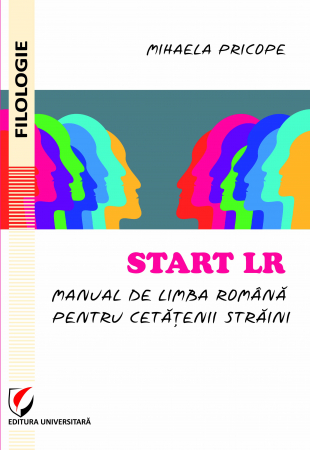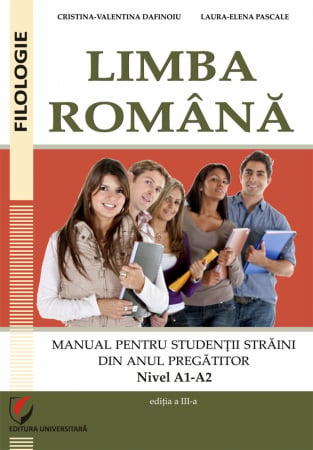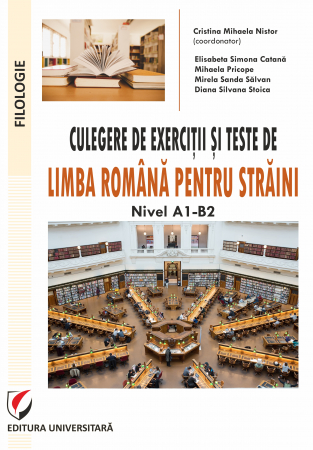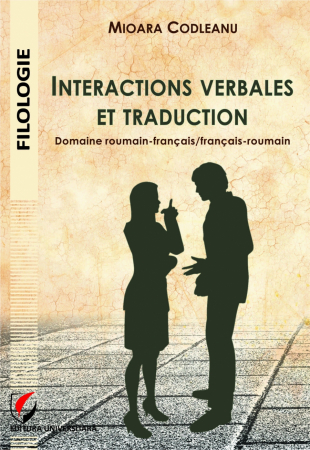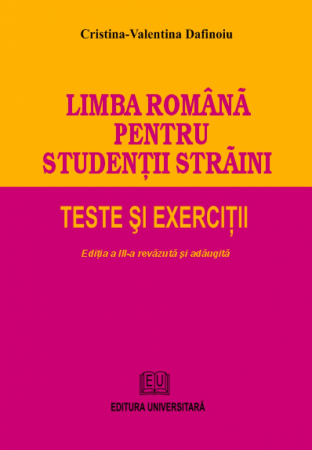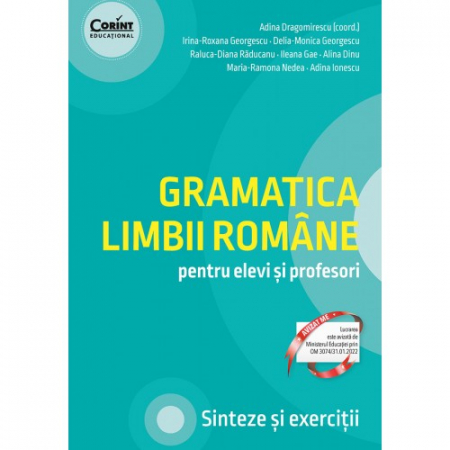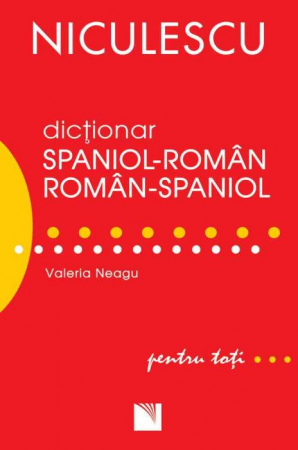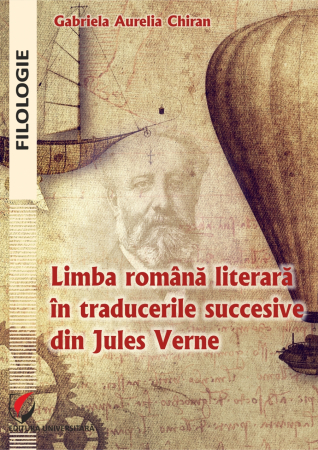ISBN: 978-606-28-0242-4
DOI: 10.5682/9786062802424
Publisher year: 2015
Edition: I
Pages: 312
Publisher: Editura Universitară
Author: Alexandra Marginean
- Description
- Download (1)
- Authors
- Content
- More details
- Reviews (0)
This book is based on my doctoral work between 2007 and 2012. I would like to thank Professor Lidia Vianu for all her support, as well as all those who understood my thoughts and writing and knew how to say the right things at the right time to hearten me in my endeavour.
A relevant part of this material has been turned to good account, sometimes in its rougher stages of the making, in presentations and publications in various national and international conferences.
-
Graham Swift: Space as Strategy...
Download
FOREWORD / 7
1. SPACES OF LIVING / 17
1.1 The City / 17
1.1.1 Paradigmatic Connotative Legacy / 17
1.1.2 The City as the Characters’ Atmosphere of the Mind / 20
1.2 The Suburb and the Countryside / 36
1.3 The House and the Workplace / 54
1.4 “Total Institutions” as Places of Authenticity. The Hospital, the Asylum and the Prison / 79
2. THE HUMAN BEING’S BEING-IN-THE-WORLD. THE BODY’S SPATIALISATION; USE AND ABUSE / 90
The Place(ment) of the Body in Spatial Identity Construction / 90
2.1 Persona(e), or Identity as a Resultant of Social Interaction / 92
2.1.1 Preliminary Insights into Being Social and/or Social Being / 92
2.1.2 The Sweet-Shop Owner – Making Do with Patterned Reality / 103
2.1.3 Shuttlecock – The Oppression of Fatherhood / 118
2.1.4 Waterland – Circumventing the Continuum? / 123
2.1.5 Out of This World – The Inescapability of Violent History / 133
2.1.6 Ever After – Causality, Uncertainty and Misrecognitions / 142
2.1.7 Last Orders – Of Various Journeys / 157
2.1.8 The Light of Day – Crossing the Line / 168
2.1.9 Tomorrow – The Perpetual Différance / 178
2.1.10 Caribbean Dawn – The American Dream / 185
2.2 The Body as Space – Types of (Ab)used Bodies / 187
2.2.1 Objectified Bodies / 189
2.2.2 Bodies of Affliction / 193
2.2.3 Grotesque and Abject Bodies / 199
2.2.4 The Beautiful Body / 207
2.2.5 Bodies of Sublimation / 212
2.3 Traumatised Selves. Identity in the Context of Crisis and Trauma / 219
3. PHOTOGRAPHY AND WRITING AS SPACES OF IDENTITY DISCOURSE / 232
3.1 Photography as Topos, or the Veil of Modern Times / 232
3.1.1 War Photography – Shooting Snaps. An Abusive Act. Photography and Violence / 232
3.1.2 Photography as Discourse, an All-Encompassing Allegory. A Used and Abused Space/ 238
3.1.3 … and a Space of Use and Abuse / 246
3.1.4 Personal (Hi)Stories. Photographs of Individuals / 256
3.2 The Space of the Fictional World as a Container for (Its) Other(s). Writing as Mise-en-Abyme / 266
3.2.1 Operating Concepts. Our Use of the Concept of Metafiction / 268
3.2.2 Historiographic Metafiction – Cultural Background for the Analysis of a Phenomenon. Waterland / 271
3.2.3 Ever After and the Immersion in the Victorian Age / 278
3.2.4 Shuttlecock – a Story of Secrecy and Detectivism / 288
3.2.5 Other Novels and the Quintessence of Minuteness / 290
CONCLUSIONS / 294
BIBLIOGRAPHY/ 303
The field of interest in this paper is contemporary British literature, more precisely Graham Swift’s novels between 1980 and 2007. The corpus is therefore constituted by nine novels (see the list of primary sources).
The objective is to focus on the concept of *space, in various acceptations, in order to reveal how the *identity of the characters is constructed on the model of *metonymical ipsusms in relation to these resulting spaces, in an ambivalent attitude to them (*use and abuse).
The aim of this analysis is multiple. On the one hand, we want to demonstrate that space is an indispensable element in the understanding and construction of contemporary modern identity. On the other hand, the paper will illustrate that space is not necessarily a dimension restricted to the core of American mentality (based on absence or denial of historical continuity, as compensation), but that it is equally not only applicable, but also necessary to European territory. Last but not least, the paper will orient itself towards the ethical dimension of space, i.e. space (to be read here as immediate context, duty/obligation) as a possible answer to existential problems that appeared against the background of contemporary crisis.
* Space, in various acceptations. Space and identity. As far as types, there are concrete spaces (the city, the house/home, the workplace, the hospital, the asylum, the prison, and the human body) and abstract ones (the space of human interaction or roles, the past, photography, and the fictional world).
Regarding problematisation, space is understood as transformed, in a nostalgia for a “cosmotic pathos” (Liiceanu 1999 43), through simple approach, or narrative “gaze” upon it, from a certain perspective (sight, gaze), with a certain affect or emotion, via voice/writing, to the purpose of particularisation out of a range of possibilities of description, in order to mark and be marked in one’s identity, to reveal personality. It will be treated as Heidegger’s “umwelt” (inhabiting, dwelling), which draws attention to the essential tendency of Dasein towards nearness, orientation, and ordered arrangement (the instrumental being an important part of this outlook). It is Bourdieu’s “habitus”, or what has been called “embodied space” (Merleau-Ponty), in which experience and human awareness take material forms.
In “a street, a photograph, a text” (Doinaş 1999 12), the character “lives”. Each of these is “ethos” (Liiceanu 1999 38) (to be, to inhabit and to speak are tightly connected, the first two also being interchangeable). The human being is like an immense “emotional topography” (Doinaş 1999 12), and writing, which is “the field of the imaginary” – “locus poeticus” (10), is the space of the expression of identity with the help of figural elements. The “spaces” inhabited by a human being can render a part of her/his “hestia” (Liiceanu 1999 38), i.e. nature, essence, core.
Thus, the space/place is understood as a sum of messages out of a range, a “condensation of values” (Kuper 2004 258) that also incites an array of responses; it is a “stage” that requires a certain role/status.
Space versus place. Usually, whenever space and place are mentioned together in the same research, they are contrasted in terms of subtler connotative associations and layers of meaning. A. Thacker discusses these differences in modernity, explaining that “space” comes with connotations of movement and progression, whereas place is rather static, referring to location or dwelling (Thacker 2003 13-5). Michel de Certeau considers that place is more general and fixed than space, i.e. connoting “order” and “stability” (de Certeau 1984 117): “in relation to place, space is like the word when it is spoken”; space is “a practiced place”. These differences will not be preserved in our paper. Firstly, the objective here is not to further a detailed theoretical distinction between these terms, but an applicative research of the Swiftian novelistic world. Our interest is how recourse to space or place, understood as circumscriptions, models the identities of the characters, in the assumption introduced above. Secondly, we are using space in a more encompassing sense, as already stipulated, which logically and intuitively draws towards generalisation, not particularisation. Thirdly, we are moving here towards interpretations that are trying to avoid clear-cut binarism. Therefore, we will use the notions of space and place interchangeably, with the meaning that we have mentioned above, sometimes in complementary distribution with position/role/context etc., according to the focus of the respective part of the paper.
* Identity. Graham Swift brings into discussion the alienated, dislocated, unstable, fragmented self, whose schizoid nature is incompatible with a unitary identity that could be rendered as such. The characters’ interior profile suits, in broad lines, what has been described as postmodern typology (McHale, Hutcheon). They have apparently lost trust in the existence of meaning/centre. They no longer believe that they have access to universal schemata or order – les “grands récits” (Lyotard). However, they search for these incessantly, which shows their contradictory nature. Torn by existential issues, inner struggles, and regret, the characters manifest either impotence as victims, or revolt, or both simultaneously. Thus, they directly or subtly indicate the absence of modern values, as well as the lie and hypocrisy of the modern world. Consequently, they feel estranged in their own existences.
In the modernity of Lights, the individual is a citizen who belongs to a well-defined place in society, with which (s)he identifies, and which (s)he hopes to perfect. As representatives of the humanist model, people are self-confident and get involved in the social and political life of the community. They know who they are or who they can become, where their place is and what they have to do. Space appears as more fixed or more clearly delineated in relation to the identity of this individual. Graham Swift’s character is, like that of “late modernity” (McHale), an individualistic monad who tries on “roles”, in an attempt (which (s)he knows to be futile) to compose a whole. His/her positioning is fluid, unclear, and unstable. (S)he is no longer a “person”, but only, histrionically, persona/ae. Hence, the multiplicity of the roles (s)he plays, and his/her ambivalence towards them. Hence, also, the theme of life as a stage. The characters discard the positions offered for occupation as artificial, but acquiesce to “play the game” life throws, taking over the roles attributed to them arbitrarily, within a chaotic, atelic system. There is no unitary identity, just as there is no unitary meaning, or, if there is, it cannot be rendered. The quest for identity is an occupation of “musical chairs”, in the absence of embeddedness (Bauman 2001 33). It involves offering oneself to the others in partial “selves”, on the model of ersatz (surrogates), in relation to space(s).
Life and reality are not seen as a linear, telic, inherently logical history, but as discontinuous, formed by elements juxtaposed without reason. Identity is the collection of “positions simultaneously occupied […] by a biological individual socially instituted, acting as support to a collection of attributes” (Bourdieu 2000 302). In the spirit of this logic, identity consists in roles that appear as a result of applying “technologies of the self” (Foucault qtd. in Rose 2000 315), i.e. disciplining practices, to both the body and the mind. The body is the first “space” on which we mark identity, via clothing, gestures, mimicry, and behaviour. The disciplining of the mind creates mentalities, which are positions and values tied to a specific space/context in time. The application of Foucault’s techniques results in hypostases and subjectivity (subject positions), namely identity. Identity is therefore the occupation of multiple subject- positions (multiple subjectivity), with every one of which the character usually does not identify fully.
Swift’s character, like the late modern one, is indeed both inside the norm (using its instruments), and outside it, looking at it critically, in a permanent transgression. Her/his searches are directed, in a continuous fluctuation, both inwards, in a parodic, self-reflective attitude, and outwards, with an eye to history. The transgression of limit (peras) is manifested not only in stepping outside the boundaries of one’s status, but also in a vacillation between the spaces of the past and the present. The characters try to cope with each of these spaces, and with their co-existence. The past insistently demands its place in the present, by virtue of a compelling causality, towards which the character has an ambivalent attitude, both denying it and resorting to it.
The ideas of a schizoid self and of collage, and the concepts introduced above (“musical chair”, role, peras etc.) have in common the concept of space. This approach shows that the dynamics of identity construction may be expressed in spatial metaphors.
Since the key-perspective of the paper in approaching identity is (relating to) space/spatialisation/context, we will use a critical apparatus that is compatible with this perspective. This apparatus treats identity at inter-individual, positional, and ideological levels, and comprises Goffman’s role theory (developed on G.H. Mead’s symbolic interactionism), that of social identity (developed by the representatives of the Bristol school – Tajfel, Turner, Deschamps, Festinger), Bourdieu’s habitus, and Charles Taylor’s dialogism. For these, the space in which the construction of identity unfolds is the social. As a result of interactions, power relations are unavoidably established, and these generate in their turn subjectivity (of both empowered and subordinate positions). The theoretical bases that we rely on are those of Foucault, Derrida, and J. Butler. However, we will not leave aside more empirical and intuitive, intra-individual approaches, such as psychoanalysis, or G. Bachelard’s phenomenology. These approaches refer to the human body and psyche as sites of processes and phenomena that bear maximum relevance to identity.
* Metonymical ipsums. The character cannot render oneself plenarily in any of the considered spaces. In each, (s)he is in fact oneself (ipsum), but only to some extent, fragmentarily, metonymically. This idea is a development from Ricoeur’s “soi- même comme un autre” (Ricoeur 1990).
* Use and abuse of space. We seek to reveal the ambivalent attitude of Graham Swift’s characters with respect to the spaces considered, which on the one hand they use in order to render themselves, and on the other hand they deny. Denial is a sabotage of the respective spaces as being illusory or too restrictive. To abuse means to demystify, denaturalise, subvert, as well as highlight as ambivalent, paradoxical, or double. By definition, space presupposes a circumscription, the existence of a centre, i.e. a totalising view, which this character avoids, and towards which (s)he is circumspect. Thus, we deal here with a use and abuse of space. Why space as prevalent to time. As we have seen, we favour an interpretation that takes into account the spatial rather than temporal dimension, as more relevant in conjunction with identity construction. In order to explain this, we will resort to Gaston Bachelard’s hermeneutics of identity in his applied “topoanalysis”, defined as “a psychological study of the sites of our intimate lives” (Bachelard 1969 8). In his view, temporality is the dimension of the biographer, used only to draw up external histories. Identity, however, is not mere biography, and in order to find, understand, and reveal it, we need to become acquainted with intimacy, available through memories, which are “motionless” (9). Memory is defined as a “theatre of the past” (8), a “stage setting” that “maintains the characters in their dominant roles”. The moments of “fossilised duration” (9) that form memory are also “centres of fate”, which hermeneutics has to identify by “ridding history of its conjunctive temporal tissue”. The conclusion is clear: “For a knowledge of intimacy, localisation in the spaces of our intimacy is more urgent than determination of dates.” He also points out the illusion that may lead us to favour time over space, warning that space is more intuitive in the assessment of personal identity:
“At times we think we know ourselves in time, when all we know is a sequence of fixations in the spaces of the being’s stability […] In its countless alveoli space contains compressed time. That’s what space is for.” (8)
Moreover, a spatial approach seems suitable in a context in which telicity and progress(ion), figured as a temporal axis, are questioned. Temporality is compatible with a belief in progress within a civilising process of humankind, which characterised enlightened modernity. Pierre Bourdieu offers the best illustration of this idea. He draws attention to the way an individual, (a novelist in particular), was prone to commit a “biographical illusion” (Bourdieu 2000 297) of “making oneself the ideologist of one’s own life” (298), which was an “artificial creation of meaning”.
The concepts mentioned above will be used in the chapters of the paper, which are as follows:
1. The SPACES OF LIVING will deal with material spaces. Identity becomes visible in relation to: the city/region (e.g. New York – Out of This World, Paris – Ever After, London – Waterland, Bristol – Caribbean Dawn); the existing urban-rural opposition, with all the attached significations; the house/home; the place of habitual daily activity and exercise of a job – the workplace, which can be a shop or an office. In a discussion of these, we will resort to concepts such as the following.
Imprinted or “inscribed space” (Low and Lawrence-Zúñiga 2004 13), and “translocal” (25) /“transnational”, fluid spaces, are formed by movement and conversation strategies, and fragmented by the presence of a character that imposes its identity in a foreign space.
For instance, a Greek-origin Englishwoman defines New York as a place without a past; we feel her irony in the characterisations she makes to both the British and the Americans. “Contested spaces” (18) are territories that make the object of disputes in times of war (but not only), at national, regional, or individual levels. Locally, there is a fight for the preservation of a social position that changes once war and its effects reach it (The Sweet-Shop Owner). However, contested spaces do not appear only in open international war situations. They may result out of contexts that are not overtly conflicting, but in which both overtly and covertly active opposing interests, or power competitions, transform the respective arenas into contested spaces. An example would be workplaces. “Multilocality” (Rodman 2004
205) refers to the space where there are two or more types of orders and forces that operate modifications in the interaction of characters, and thus in their status and identity. For instance, war changes the configuration of statuses in a given area.
1.1 The City. The preponderantly positive and negative connotative contents surrounding the city in early modernity and, respectively, late modernity, will be considered, along with their impact on the individual and on identity construction. The city will be analysed under the aspect of its negative effects on the human psyche in the modern world – what G. Simmel called “mental life” (Simmel 2002 11). These effects model personality and self- rendering mechanisms, along with the conception of self and the world, i.e. identity. The impact of economic transformations on the social plane after the Second World War will be referred to as well.
1.2 The Suburb and the Countryside. This section will start from older, more traditional separations of conceptual cores attached to the spaces in question (such as those of Raymond Williams and Andrew Thacker). Then, it will pass to the latest depictions of the suburb and the countryside. The demonstration will rely on highlighting the critical content assignable to the suburb, to the extent of its salience to the topic we focus on and to the identity profile of the characters. The conclusions draw on the suburb as Foucault’s “heterotopia” (Foucault qtd. in Mihali 2001 43), Edward Soja’s “Third” or “middle” space (Soja 2008 2), as well as Lefebvre’s “representational” (Lefebvre 2007 39), “lived” one. Its middle status prefigures the position(ings) of the characters in relation to various aspects of identity (such as social roles, for example).
1.3 The House and the Workplace. The analysis will focus on the way in which the archetypal understanding of the concept of home, as a space of protection, safety, the exercise of ownership etc., gets transformed in the eyes of Swift’s characters, which are facing the end of the millennium. We will see to what extent their home preserves these functions and what recent functions it acquires in the context we have just mentioned. Concepts taken from Bachelard, Baudrillard, Bourdieu, Liiceanu, and Dascăl for the archetypal background will constitute a starting point.
1.4 “Total Institutions” as Places of Authenticity. The Hospital, the Asylum and the Prison. In cities, spaces like the hospital, the asylum, and the prison – “total institutions” in Goffman (Goffman 1991 11) – are marked by positive attributes in Graham Swift (in opposition to the urban space). In a reversal of expectations, these spaces function as propitious environments and triggers for authentic feelings, as opposed to those of ordinary existence and contexts. Hence, the revelation of a more profound, sincere, or rehabilitating side of the characters is made possible.
2. THE HUMAN BEING’S BEING-IN-THE-WORLD. THE BODY’S SPATIALISATION; USE AND ABUSE. The title suggests that individual identity is, according to some perspectives, unavoidably social (Turner, Jenkins). The individual appears as torn between opposite tendencies – both inclined to be an individualistic monad, and in need of emotional ties. This part of the paper contemplates how the character (ab)uses oneself as site, in order to construct one’s identity in society, and to signify. The individual applies certain relational and expressive strategies, (ab)using the physical body as visual support, along with etiquette, manners, and embodied roles. Bourdieu’s notion of habitus will be the central focus.
2.1 Persona(e), or Identity as a Resultant of Social Interaction. Voicing Jenkins’s belief that all identity is social, the priority will be to reflect on: inter-human relations, status, and role (Goffman); the motif of the world as a theatre; the dynamics of relationships such as paternity, masculinity, and sexuality (Foucault); the ethical choice of the “being-for” (in Lévinas and Z. Bauman’s reading). The relationship with history and the past is a considerably recurrent issue. Habits and routine appear as means to exorcise anxiety (Winnicott, Erikson, Laing) and to set and take up roles, and therefore identity(ies).
2.2 The Body as Space – Types of (Ab)used Bodies. The body is the first “place” on which markers of identity appear, through clothing, gestures and mimicry, behaviour, countenance, demeanour, etiquette, and movement. The presentation of types of (ab)used bodies will converge to reveal Arthur Frank’s classification of body usages as displaying fuzzy boundaries, and the bodies in our analyses as pertaining to various of his types concurrently.
2.3 Traumatised Selves. Identity in the Context of Crisis and Trauma. The interest here falls initially on the paradoxical processes that unfold at the level of the (un)conscious of the traumatised. We use them to show how trauma is a valuable instrument in the above-mentioned identity construction, due to its inherent ambivalences. Theoreticians in the field, such as Cathy Caruth, Douglass and Vogler, Van der Kolk and Van der Hart etc., along with Freud, offer helpful perspectives.
3. PHOTOGRAPHY AND WRITING AS SPACES OF IDENTITY DISCOURSE.
3.1 Photography as Topos, or the Veil of Modern Times. The section approaches the past and the photograph as sites, with reference to the latter as a space that captures (creates/recuperates) reality in both objective and artificial ways. War photography is subjected to thorough analysis (and, within it, its relation to violence holds a special role), but personal photographs of individuals cover a separate section as well. One of the objectives in this part is to see how photography can be a complex allegory. We are also interested in the manner in which it both constitutes a space of (ab)use, and offers positions for further use and abuse. As far as theoretical insights, this part draws on Barthes (studium and punctum), Hutcheon, Sontag, Soulages, and Durand.
3.2 The Space of the Fictional World as a Container for (Its) Other(s). Writing as Mise-en-Abyme. This section will bear on the fictional world, i.e. literature, as space within the space of the novel. We highlight the effects of this strategy. Meta-discourse offers legitimacy, being a claim to objectivity or, on the contrary, draws attention to the illusory nature of facts in the writing. It also achieves lyricism. All these serve identity construction. Artifices like mise-en- abyme and extended allegories allow the debate of existential issues such as human condition, evolution, genesis, the meaning of life, love etc.
A significant place will be granted to the problem of (re)writing history, to historiographic metafiction, and to philosophical issues pertaining to ontology and epistemes, such as the nature of truth and its attainability, and the difficulty of separating reality from illusion. Graham Swift’s characters feel the epistemological crisis blending with their regrets about their own lives. In Waterland, as in Out of This World, this matter is discussed openly, but it insinuates itself discreetly in the fictional layers of the other novels as well. We may view history as the first discourse, and the comments or perspectives of the narrator(s) on history as the discourse within discourse. As theoretical support we will use Hayden White, Linda Hutcheon, and Susana Onega, among others.
The general critical approach in this paper is cultural studies, with additional concepts from various fields – sociology, psychology, anthropology, identity studies, city studies, and feminism. With these tools we will show that, in the case of fragmented selves, space(s) play(s) an essential part in identity rendering on the model of metonymical ipsums.
The preponderant attitude in the sub-section 3.2.2 of chapter three is a New Historicist stance. This approach is one of the elements that show the broader scope of our research, beyond mere literary analysis. The interludes of Swift’s narrators appear as attempts to make sense of history, and implicitly of their identities. Visible in the narratives at hand is their belief (as well as that of the implied narrator and author) in a set of mirrors: history, real events, individual lives, and accounts of all these. The thoroughly detailed, debated, and problematic notion of representation permeates the narrative world(s) considered.

6359.png)
![Graham Swift: Space as Strategy of Identify Construction. Use and Abuse of Space [1] Graham Swift: Space as Strategy of Identify Construction. Use and Abuse of Space [1]](https://gomagcdn.ro/domains/editurauniversitara.ro/files/product/large/graham-swift-space-as-strategy-of-identify-construction-use-and-abuse-of-space-794-578872.jpg)
